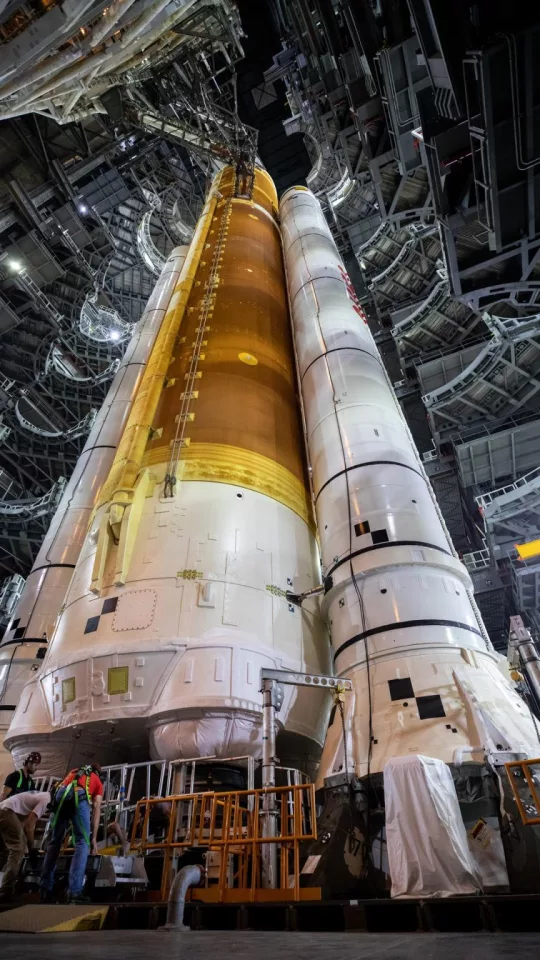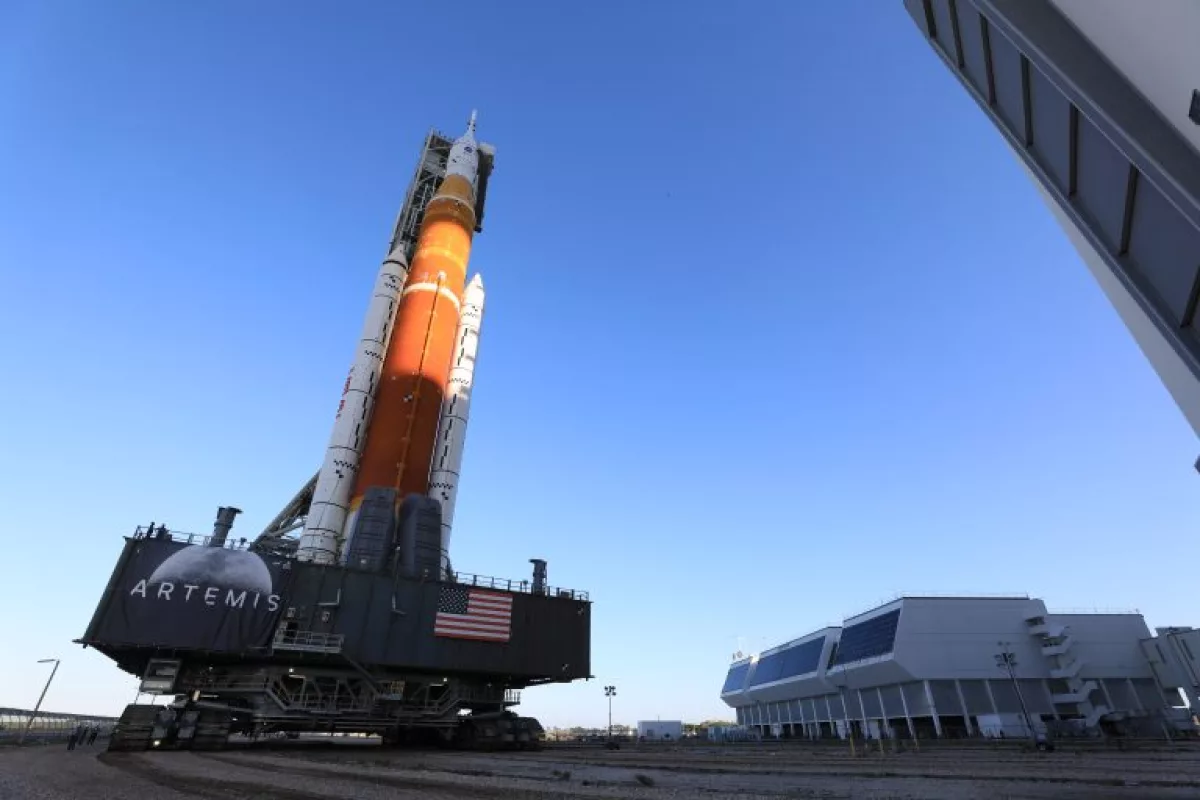NASA's massive new Moon rocket is inching closer to lift-off, with the Space Launch System (SLS) today exiting its Vehicle Assembly building for the first time and making its way for the launch pad. On arrival engineers will carry out what's known as a wet dress rehearsal with full fuel tanks, ahead of the Artemis 1 mission launch scheduled for May this year.
The SLS will be the most powerful rocket ever built and has been under development for more than a decade, as the agency gears up for a new era of deep space exploration. It and the Orion capsule will be the backbone of NASA's Artemis program, aiming to return humans to the Moon and possibly send them far beyond.

Following years of careful assembly and testing, the SLS rocket and Orion spacecraft were placed atop a crawler-transporter and ferried out of the Vehicle Assembly Building at the Kennedy Space Center on March 17. Traveling at a top speed of 0.82 mph (1.3 km/h), the four-mile (6.4-km) journey is expected to take six to 12 hours, and is still underway at the time of writing.

Once it arrives at Launch Complex 39B, engineers will get to work preparing the SLS and Orion for its wet dress rehearsal. This means pumping more than 700,000 gallons (3.2 million liters) of cryogenic propellants into the tanks in line with the scheduling that will be used on launch day, and then running through every element of the countdown, including weather briefings, deliberate pre-launch holds and propellant removal and replenishment.
In the days after this wet dress rehearsal, the rocket and spacecraft will be returned to the Vehicle Assembly building to remove test sensors, recharge batteries and complete final checks ahead of the launch proper. That is slated for May, but NASA will review data from the wet dress rehearsal before finalizing the date.

When it does lift-off, the unmanned Artemis 1 mission will be the first big test for these deep space exploration systems. It will take place over three weeks and send Orion thousands of miles out past the Moon before it returns to Earth hotter and faster than any spacecraft before it.
The Artemis II mission will be the first crewed SLS and Orion flight and will take astronauts further afield than any humans have ever traveled, around 4,600 miles (7,400 km) beyond the far side of the Moon. The objective will be to make sure all systems are in working order in the deep space environment, paving the way for Moon landings on the Artemis III mission thereafter.
Source: NASA





